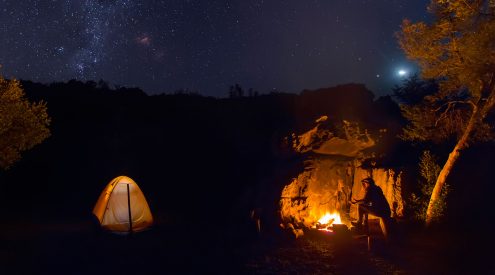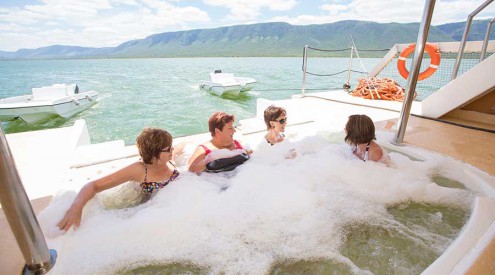As hot as hell! A phrase often herd when referring to the October weather. And for good reason I must add.
Whilst out on leave in September I enjoyed some blissful weather conditions along South Africa’s famed Garden route. So you can imagine the shock when I landed in Botswana only to be greeted by the warmest weather I have ever experienced.
For the first half of the month the midday temperatures hung around the 43°C mark. The highest being a sizzling 46°C. Without a single cloud in the sky there was no escape. Every day from 09h00 in the morning the heat became uncomfortable, only letting up once the sun disappeared behind the horizon. Every day I looked to the sky in search of those large cumulonimbus clouds that would bring relief – but nothing.
I quickly realised that life was not going to get any easier, so I developed a simple plan to try manage the heat. I knew the high midday temperatures would make working difficult so I did the physical tasks in the morning hours before it became bearable. Accepting that the midday and early afternoon would be a lost cause for any serious work. But this was not always possible. At times I had to force myself away from the small fan in the camp office (which did very little in any case) to perform essential camp tasks.
Through the month we had to develop techniques to deal with the intolerable temperature. After sending guests out on their afternoon safari we would take to the pool. It is a miracle the pool water remained so cold, or who knows where we would have found our sanity.
The idea of popping home for an afternoon nap was no longer an option. The hot sun on the tin roof turned the house into an oversized oven. The fan did nothing by swirl the warm air around the room. Instead I took to the lounge in camp. There the open sides allowed a gentle flow of air while the thatch roof kept the sun at bay.
Out in the wilderness the elephants also had a tough time. In early October Chaplin, our boat captain, discovered an old elephant that had died on the waters edge. The trees had only started to sprout new shoots, meaning good quality food was still scarce. He most likely died of starvation, a common way for older elephants to go. It was sad to see the giant creature lying on the waters edge, a stark reminder of how harsh Africa can be. We expected there would be more as the month went on.
In an attempt to escape the heat the elephant’s continued to gather in large numbers along the channels edge. For hours they would hang around the small open patch in front of camp. The marshy area on the opposite bank offered more succulent and nutritious food in comparison to the dead mopani just a few hundred metres inland.
As they crossed the channel they would submerge their massive bodies below the surface. Like whales breeching, the elephants would lift their heads and trunks high out of the water and flop back over. Sometimes all we would see was four feet sticking up in the air. I could only image the liberation they must have felt as they played in the water. When I see them like that I wonder about their ancestry. They look so comfortable in the water, it’s like they belong there.
With the hot and often uncomfortable conditions one may think there’s little to enjoy out here round this time of the year. But that is not the case. For me, it has been an intriguing month of change.
Firstly, the trees around camp slowly started to sprout new leaves. Clearly in anticipation of the up coming rains. Walking on the boardwalk I started to notice the branches creeping over the balustrades and onto the walkway. On the sections where the walkway is on the ground I had to start pulling out the grass growing between the planks. Just two months ago there was barely any greenery in sight. Little by little my surroundings transformed from this despairingly dry looking woodland into the lush paradise I recall from when I first arrived last December. I can only wonder what sets this change off and how do the plants know its time to start producing leaves.
Then, one morning around mid-October, the clear ‘chir chrrrrr’ call of a woodlands kingfisher rang out across the channel. Their arrival signalled the return of the migratory birds. The open billed storks, another migrant, also made an appearance. They settled on the old Savuti woodpile hide, presumably their new home for the summer. Soon to follow will be the twitters. They’ll arrive in camp fully prepared with high-tech binoculars and telescopes, eager to tick off some lifers from their ever growing bird list.
Finally on the morning of the 19 October the sky to the west of camp turned dark and gloomy. In the distance the lighting viciously flashed across the open sky. I sat on the deck and watched in anticipation. This was the first storm of the season. Would it be the one to kick start the rains?
There is something magical about a thunderstorm in the African bushveld. As it approached I could feel the release in pressure. Out here rain is more than just water falling from the sky. It breathes life back into a system that has been starved for months. Every plant and animal must have felt the relief as I did. Unfortunately only a few drops fell before the storm blew over. But it was a sign of what’s to come. So for now I must remain patient.
















